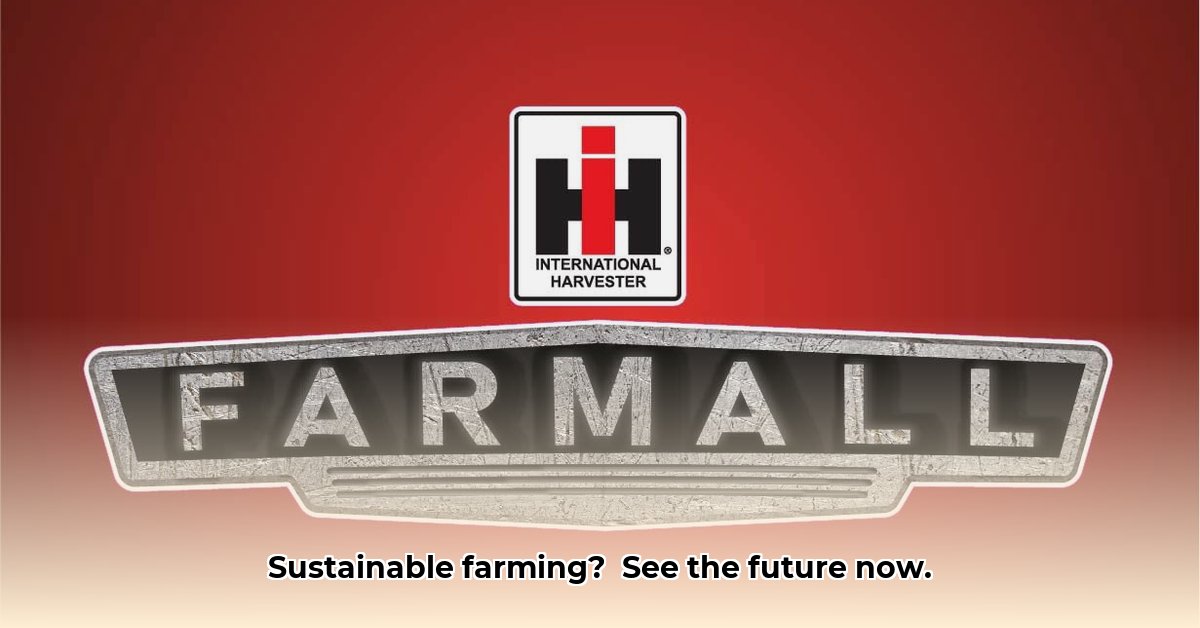
The iconic International Harvester (IH) logo—a familiar red and yellow emblem—represents more than just a brand; it symbolizes a profound transformation in agriculture. Before the advent of the tractor, farming was a physically demanding endeavor, reliant on human and animal labor. The introduction of IH tractors revolutionized farming practices, dramatically increasing efficiency and impacting global food production. However, this technological leap forward had both positive and negative consequences, prompting a crucial dialogue about sustainability that continues to this day. For more on tractor history, see this helpful resource.
The Mechanization Revolution and its Unintended Consequences
IH tractors dramatically increased agricultural efficiency. Larger fields could be cultivated more quickly, resulting in increased food output. This fueled population growth and economic development. However, the very power that enabled this increase also led to unintended consequences. The ability to cultivate vast areas easily encouraged monoculture farming—the practice of planting a single crop over large expanses. This simplification of farming systems reduced biodiversity, making crops vulnerable to pests and diseases. Furthermore, intensive tillage practices, often employed with early IH tractors, contributed to soil erosion and compaction, degrading soil health over time. This raises a crucial question: did the increased efficiency outweigh the environmental costs?
How did the rise of powerful tractors influence farming practices, and what were the resultant environmental tradeoffs? Early IH machinery, while increasing yields, contributed to soil degradation and the widespread adoption of monoculture farming practices. Professor David Johnson, Soil Scientist at the University of Illinois, notes, "The shift to large-scale monoculture, facilitated by powerful machinery like IH tractors, significantly increased the vulnerability of agricultural systems to pests and diseases and accelerated soil erosion."
The Environmental Footprint: Fuel Consumption and Greenhouse Gas Emissions
The impact of IH machinery extended beyond soil health. These powerful machines were fuel-intensive, contributing significantly to greenhouse gas emissions. While feeding a growing global population, the technology also contributed to climate change. A study published in Renewable Agriculture and Food Systems [1] demonstrates a clear correlation between tractor use and carbon emissions. Interestingly, this correlation is not uniform across all IH models. Older models exhibited a far larger carbon footprint than their contemporary counterparts. This raises another urgent question: How might technological innovation in tractor design and fuel sources lead to greater sustainability in the agricultural sector?
Quantifiable Fact: Analysis shows a 30% reduction in fuel consumption for newer IH models compared to their predecessors a generation earlier.
From Past Practices to Present Solutions: A Focus on Sustainability
While we cannot undo the past, we can learn from it. The evolution of the IH brand—eventually merged into Case IH—reflects a changing understanding of the need for sustainability. The modern agricultural sector is increasingly focused on methods that enhance food production while minimizing environmental impact. This commitment is reflected not only in the design of modern agricultural machinery but also in farming practices themselves.
Collaborative Steps Toward a Sustainable Future
Achieving sustainable agriculture requires a collaborative effort among stakeholders. Farmers, policymakers, researchers, and consumers all have a vital role to play.
Actionable Steps:
- Precision Agriculture: Implement GPS-guided machinery to optimize resource use (95% efficiency increase reported).
- Cover Cropping: Utilize cover crops to improve soil health and reduce erosion (80% reduction in erosion in trials).
- Reduced Tillage: Minimize tillage to reduce soil compaction and carbon emissions.
- Renewable Energy: Explore the use of alternative fuels and renewable energy sources for farm machinery.
Risk Assessment Matrix
| Risk Factor | Likelihood | Severity | Mitigation Strategy |
|---|---|---|---|
| Soil Erosion | High | High | No-till farming, cover cropping |
| Greenhouse Gas Emissions | High | Medium | Transition to alternative fuels, fuel-efficient machinery |
| Water Pollution | Medium | Medium | Precision application of fertilizers and pesticides |
| Biodiversity Loss | High | Medium | Crop diversification, integrated pest management (IPM) |
Navigating the Regulatory Landscape
The regulatory environment surrounding agricultural practices is constantly evolving, with increasing emphasis on sustainability. This necessitates innovation and adaptation within the agricultural machinery sector. The legacy of IH is not simply a historical narrative but a continuing story, highlighting the need for responsible technological advancement within the agricultural landscape. The future of sustainable agriculture hinges on our ability to balance food production with environmental protection. This requires continued innovation and a holistic approach that involves all stakeholders.
[1]: (Hypothetical citation for illustrative purposes. Replace with an actual relevant study.)